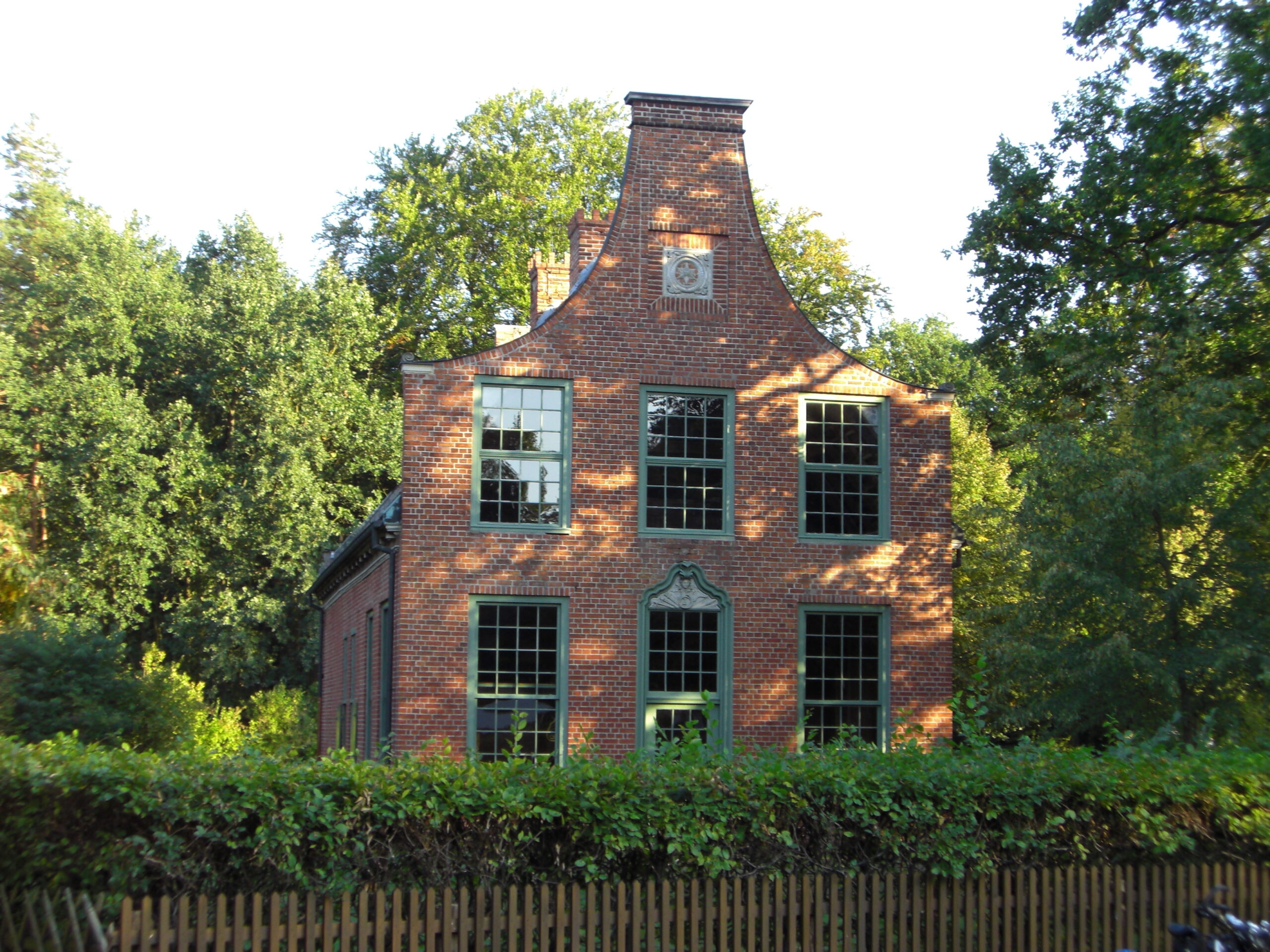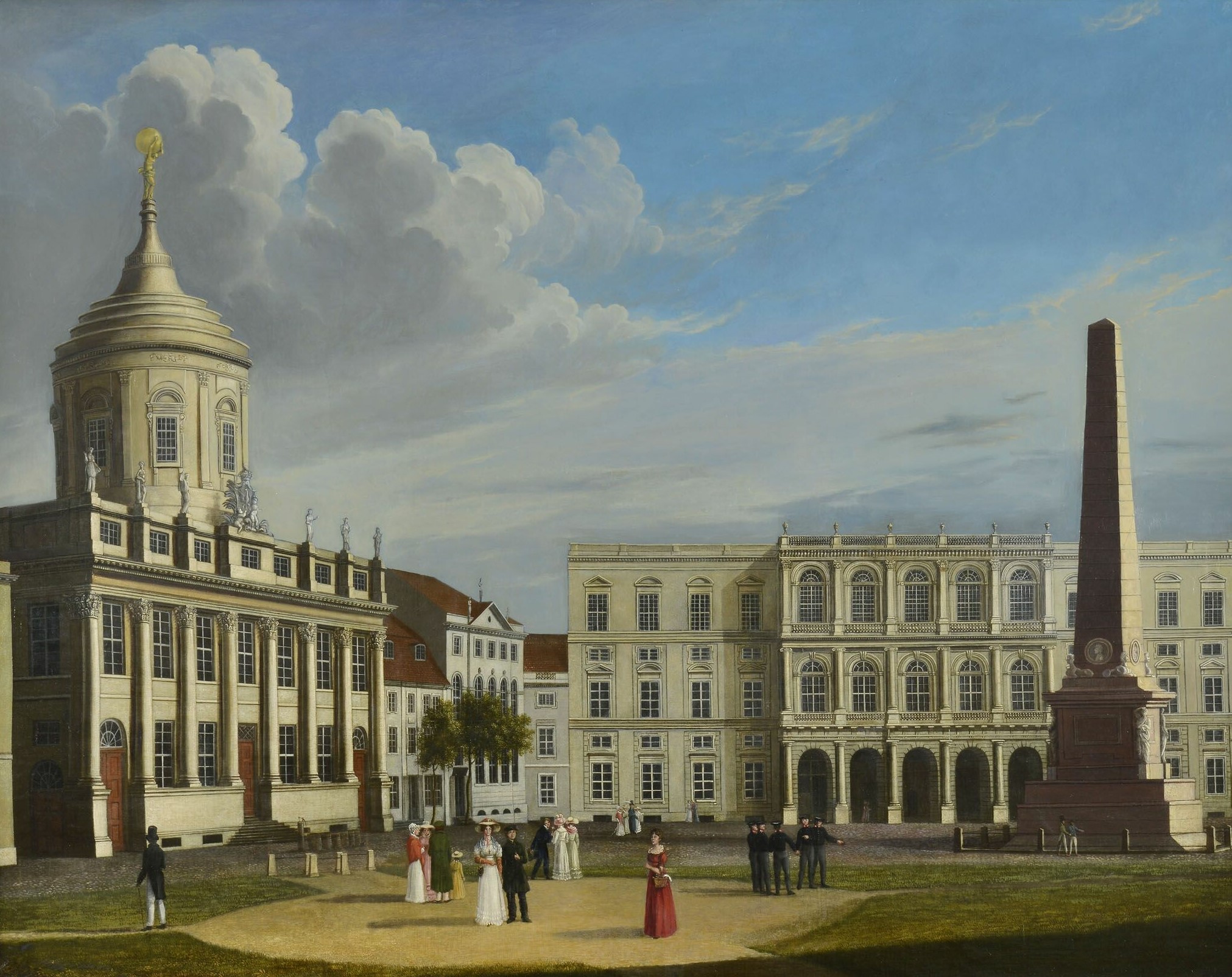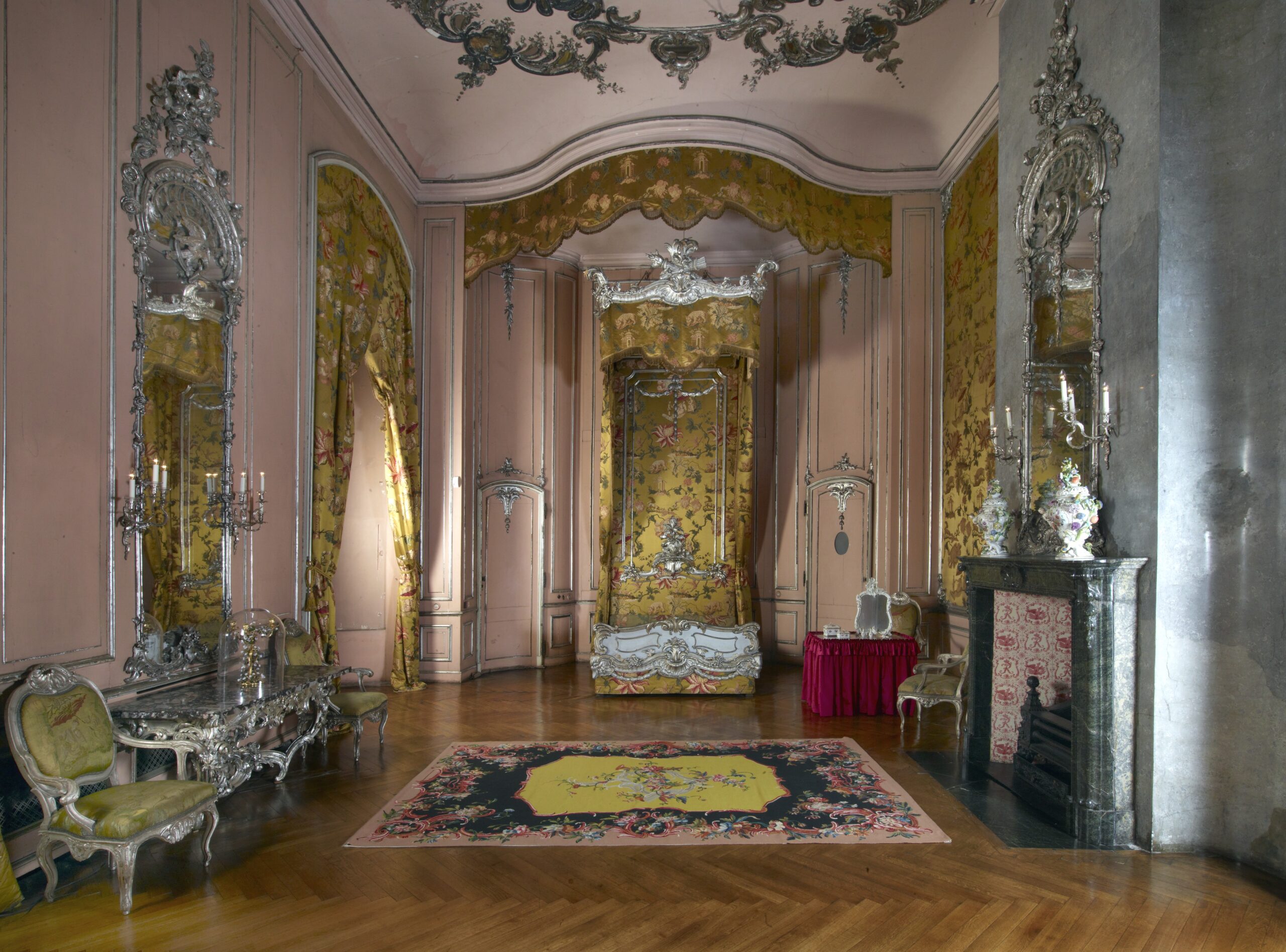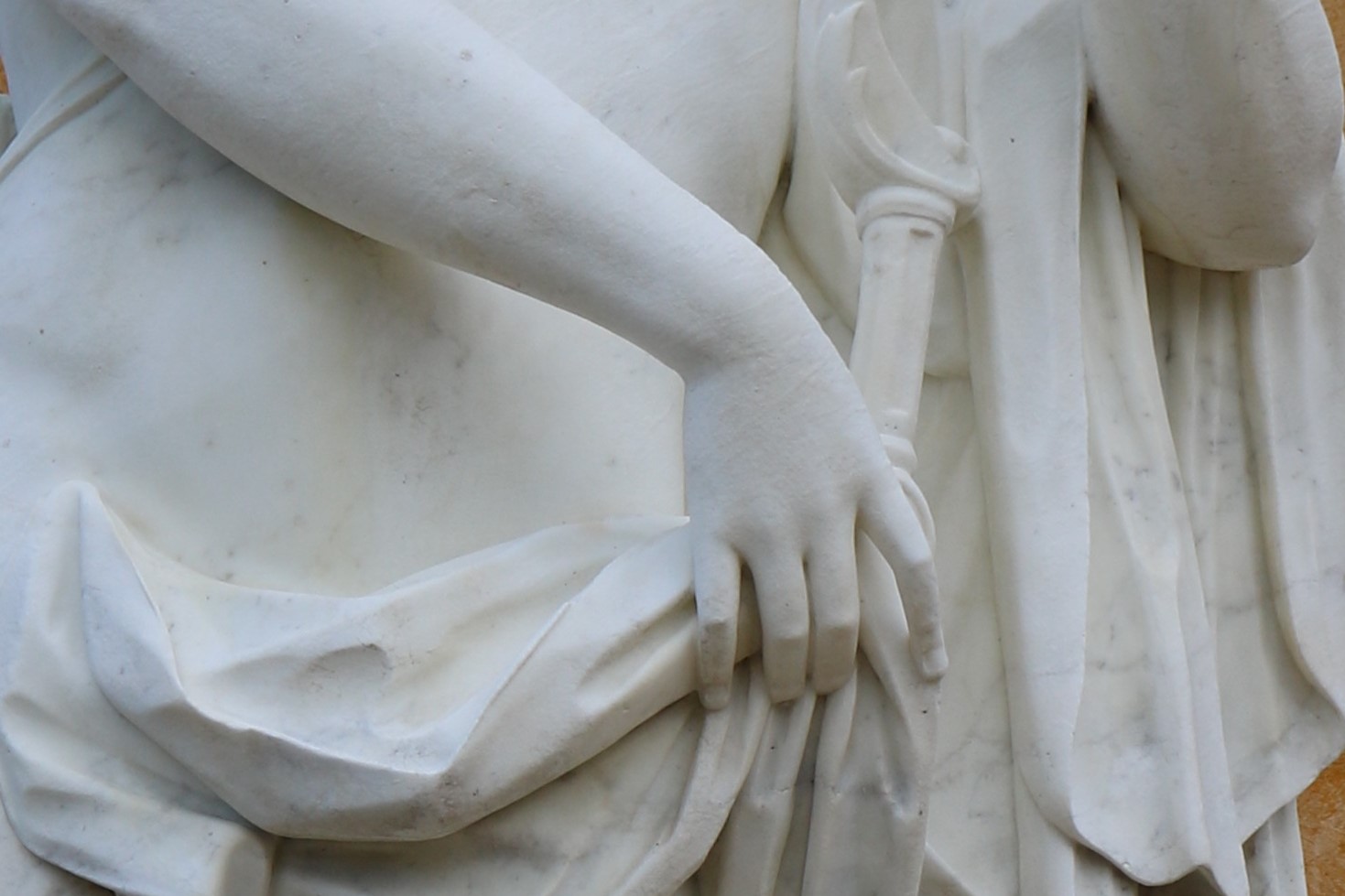
Antinous, Apollo & Endymion
The Sculptures by Asmus Frauen in Sanssouci Park
Three somewhat larger-than-life-sized marble sculptures by the Dutch-Danish sculptor and copper caster Asmus Frauen (1707‒1779) are installed at two locations in Sanssouci Park. Initially, they were presented together on the central avant-corps (projection) of the New Chambers building. However, only the Endymion figure now stands at its original location.
In 1749 the Prussian king, Frederick II (1712‒1786), had 26 marble sculptures installed along the lengthy front of the Orangery, which was later converted into a guest palace known as the New Chambers. Of these, 22 were made by young Italian sculptors working in Count del Medico’s marble quarries in Carrara, who produced more or less well-executed statues ‒ “garden wares” ‒ based on classical artworks. In contrast, the central avant-corps section of the New Chambers was distinguished with exceptionally high-quality sculptural decoration from the Netherlands. It was here that three signed works by Asmus Frauen stood: figures of Antinous and Endymion with the signature “A S Frauen fecit” and Apollo bearing the now barely legible letters “A F · fe …” (fecit). They were joined by a fourth unsigned statue of Narcissus that can also be attributed to a Dutch workshop, perhaps even Asmus Frauen’s own.
Endymion is installed along the central section of the New Chambers, in the second position from the left. He is depicted as a young man standing in an elegant contrapposto pose with a bow and quiver. The moon goddess Selene, later equated with Artemis/Diana, fell in love with the handsome shepherd and hunter. To preserve his youth, Selene put Endymion into an eternal sleep with the help of Zeus, the father of the gods, and only went to him at night. Two places further to the right, a young man stands next to a shell. Represented with long curly hair, his left hand raised aloft in a sudden gesture and legs elegantly crossed, Narcissus looks down wistfully. He appears in awe and is captured at the moment right after seeing and falling in love with his reflection on a watery surface.

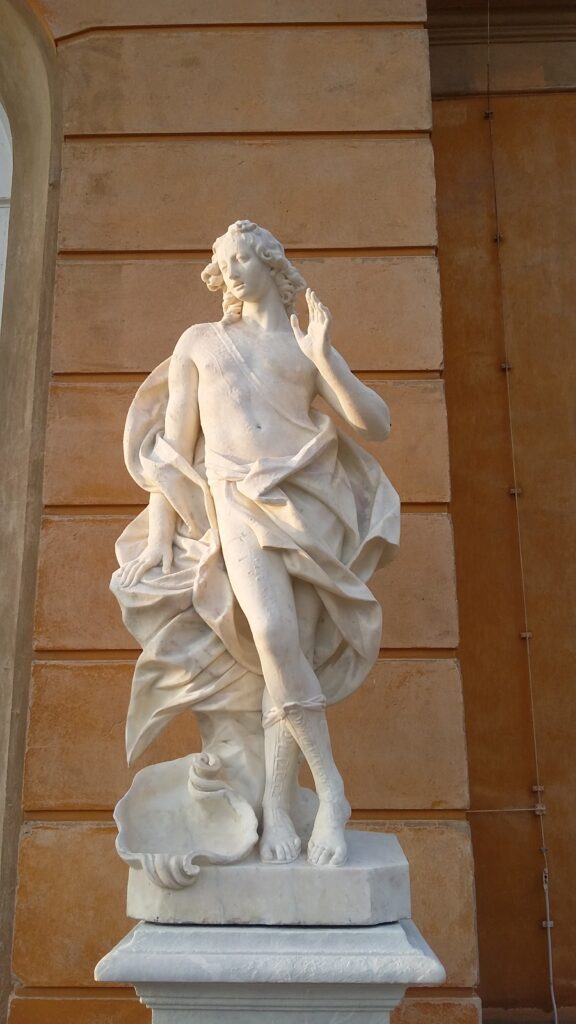
To view the other two sculptures that originally belonged to this esteemed group of four statues, we will take a short walk to the rondel (circular area) on the main avenue through the park, directly below the New Chambers. Apollo and Antinous have stood at this location since the late 18th century. After Frederick II’s death, most of the gilded lead figures installed in the park during the king’s era had been so damaged by weathering that they had to be taken down. Weathering also affected the design of this rondel, in which eight gilded lead sculptures made by Georg Franz Ebenhecht (c. 1710‒1757) used to stand. They, too, disappeared, and other figures had to be acquired to adorn the round site. A source from 1794 1 is the first to describe the change in sculptural arrangement: next to multi-figure groups from Carrara (also part of the delivery from the Count del Medico), “four marble statues” are mentioned, including Apollo and Antinous.
In mythology, Apollo is known as the god of the heavenly bodies, enthroned above the Muses, who rule the nine celestial spheres. With a graceful gesture, his left hand touches the celestial globe, where a crescent moon and stars can be seen. His usual lyre is replaced here by a sceptre. This depiction of him refers to Sol (Greek: Helios), the god of the planets and the sun, with whom Apollo had been equated since late antiquity. It is also how Albrecht Dürer (1471‒1528), for example, portrayed the god around 1503.
The Antinous figure presents his handsome nude body with a swag of roses masking his sex. The rather melancholic look on his face anticipates his tragic death. He was born in Bithynia (Asia Minor) between 110 and 112 AD. As the friend and presumed lover of Hadrian (76‒138 AD), he was part of the entourage accompanying the Roman emperor on his travels. The sheaf of reeds in the figure’s right hand refers to his drowning in the Nile in 130 AD under mysterious circumstances on one of these journeys undertaken with Hadrian. Deeply mourning this loss, the emperor proclaimed the youth a god and had a cult worship him. Hadrian surrounded himself with countless portraits of the young man from Bithynia. Frederick II also owned several Antinous statues and busts in his collections. Asmus Frauen’s Antinous was based on a famous ancient statue, the Belvedere Hermes, located in Rome in the Cortile del Belvedere (courtyard) at the Vatican Museums. The reversed pose in this version can likely be explained by the fact that the sculptor, who spent time in Italy, also as a pupil of Giuseppe Rusconi (1687‒1737), probably did not base his work on the ancient original, but instead on a print. He may have drawn on a graphic work, an etching created around 1668 by his fellow countrymen Jan de Bisschop and Pieter Doncker, depicting Hermes, the so-called Belvedere Antinous. 2


A bill from “Asmus Frauen, sculptor in Amsterdam, 1 June 1748” was received for the two sculptures Antinous and Endymion. Both works also display the same evenly curved signature. With its varying, no longer complete signature, Apollo seems to originate from another delivery for which no receipt has yet been documented. This figure may have arrived together with the Narcissus, which completed the group of four in front of the New Chambers’ central avant-corps in 1749.
The Prussian king, Frederick II, might have commissioned the figures based on Frauen’s prior stay in Italy. And they may also have been made earlier than assumed because Frauen worked with Peter (II) Schemaker (1691‒1781) in England for eight years starting in 1746. Very little is known about the versatile sculptor and copper caster. 3 He produced sculptures and reliefs in sandstone, marble and copper for churches, as well as private and/or princely patrons. For instance, from 1746 to 1753, he created putti for the garden grotto in the park at Schloss Wilhelmsthal near Kassel. His workshop in Amsterdam has been documented from 1756 to 1769. Frauen made the impressive marble pulpit in Rococo forms for the Church of Our Lady in Dordrecht, Netherlands (1753‒56, based on a model by Jan Havener), and the sarcophagus of Charles XII for the Riddarholmen Church in Stockholm.
– Dr Silke Kiesant, Curator of the Sculpture Collection, Stiftung Preußische Schlösser und Gärten
1 Rumpf, Johann Daniel Friedrich: Beschreibung der aeussern und innern Merkwürdigkeiten der Königlichen Schlösser in Berlin, Charlottenburg, Schönhausen, in und bey Potsdam. Ein Handbuch für Fremde und Einheimische, Berlin 1794, S. 229.
2 Jan de Bisschop after Pieter Doncker: Hermes, so-called Belvedere-Antinous, c.1668, etching, Stendal, Winckelmann-Museum
3for the following see: Römer, Uta: Frauen, Asmus, in: Allgemeines Künstlerlexikon 44, 2005
Header Image: (Detail) Asmus Frauen: Endymion, marble, c. 1748, Sanssouci Park, New Chambers, central avant-corps │ Photo: SPSG

